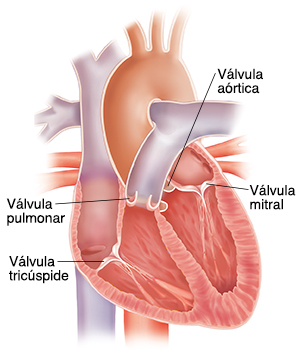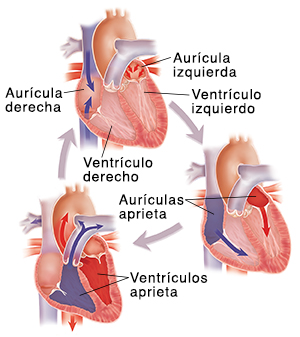El corazón tiene cuatro válvulas que se abren y cierran para mover la sangre en la dirección correcta. Cuando el corazón late, la sangre se mueve a través del mismo. Con cada latido, las válvulas se abren y cierran para permitir que la sangre avance. Así, las válvulas mantienen la sangre en movimiento a través del corazón de la manera más eficiente posible.
SPAN: SPAN: CuandoSPAN: el corazón se relajaSPAN: entre latidos:
-
La aurícula izquierda se llena de sangre rica en oxígeno proveniente de los pulmones.
-
La aurícula derecha se llena de sangre escasa en oxígeno proveniente del cuerpo.
SPAN: SPAN: CuandoSPAN: lasSPAN: aurículas laten:
-
La aurícula izquierda aprieta y bombea la sangre hacia el ventrículo izquierdo a través de la válvula mitral.
-
La aurícula derecha aprieta y bombea la sangre hacia el ventrículo derecho a través de la válvula tricúspide.
SPAN: SPAN: CuandoSPAN: losSPAN: ventrículos laten:
-
El ventrículo izquierdo aprieta y bombea la sangre hacia el cuerop a través de la válvula aórtica.
-
El ventrículo derecho aprieta y bombea la sangre hacia los pulmones a través de la válvula pulmonar.




